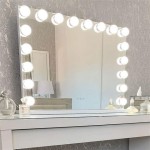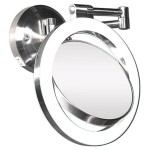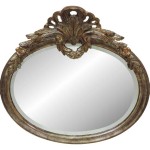Can Convex Mirrors Produce Real Images?
Convex mirrors, characterized by their outwardly curved reflecting surface, are known for their ability to create virtual, diminished, and upright images. This leads to the common question: can they ever produce a real image? Understanding the image formation process in convex mirrors allows for a definitive answer.
Key Points About Convex Mirrors
- Reflecting surface curves outward.
- Always produce virtual images under normal circumstances.
- Provide a wider field of view than plane or concave mirrors.
The behavior of light rays interacting with a convex mirror dictates the nature of the image formed. Incident parallel rays diverge after reflection, appearing to originate from a focal point behind the mirror. This focal point is considered virtual, as no light actually converges there. Similarly, rays directed towards the center of curvature of the mirror are reflected back along their incident path. These reflection properties are fundamental to image formation.
Image Formation in Convex Mirrors
- Incident parallel rays diverge after reflection.
- Reflected rays appear to originate from a virtual focal point.
- Rays directed towards the center of curvature are reflected back along their path.
To determine the location and characteristics of an image formed by a convex mirror, ray diagrams are employed. By tracing the path of specific rays from the object to the mirror and then after reflection, the image location can be pinpointed where the reflected rays intersect or appear to intersect. Because the reflected rays diverge, they never actually meet in front of the mirror. Instead, the extensions of these reflected rays converge behind the mirror, creating a virtual image.
Characteristics of Images Formed by Convex Mirrors
- Always virtual.
- Always diminished in size compared to the object.
- Always upright (not inverted).
The virtual nature of the image implies that it cannot be projected onto a screen. This is a key distinction between real and virtual images. Real images are formed by the actual convergence of light rays and can be projected. Virtual images, on the other hand, are perceived by the observer due to the brain's interpretation of the diverging reflected rays, but they don't exist as a physical convergence of light.
Real vs. Virtual Images
- Real images: Formed by the convergence of light rays.
- Real images: Can be projected onto a screen.
- Virtual images: Formed by the apparent intersection of diverging rays.
- Virtual images: Cannot be projected onto a screen.
Under typical conditions using visible light, a convex mirror will always produce a virtual image. However, there exists a theoretical scenario involving a converging lens and a convex mirror where a real image might be formed. If a converging lens forms a real image and that real image is located behind the convex mirror, and acts as a virtual object for the convex mirror, then after it's reflected by the convex mirror, if the reflected rays converge before reaching our eyes or the receiving surface, it can form a real image. This is an uncommon and complex setup, not typically encountered in everyday applications of convex mirrors.
Theoretical Scenario for Real Image Formation
- Requires a converging lens and a convex mirror.
- The real image formed by the converging lens acts as a virtual object for the mirror.
- Specific positioning of the lens, mirror, and object is crucial.
The practical applications of convex mirrors leverage their ability to produce a wide field of view. This property makes them valuable in security mirrors, automotive side mirrors, and various other situations where a broader perspective is advantageous. The virtual, diminished images produced are suited to these applications, enabling drivers to see a wider area behind them or security personnel to monitor a larger space.
Applications of Convex Mirrors
- Security mirrors.
- Automotive side mirrors.
- Situations requiring a wide field of view.
The distinct image-forming characteristics of convex mirrors, primarily the formation of virtual, diminished, and upright images, are a direct consequence of their outwardly curved reflecting surface. While a real image can theoretically be formed under specific, contrived circumstances involving additional optical elements, the standard behavior of a convex mirror when interacting with visible light results in the formation of virtual images.
Impact of Convex Mirror Shape
- Outwardly curved surface causes divergence of reflected rays.
- Divergence of rays leads to virtual image formation.
Can A Convex Mirror Produce Real Image
Can A Convex Mirror Form Magnified Image Quora
Can A Convex Mirror Form Real Image Quora
Can A Convex Mirror Produce Real Image When The Object Is Virtual And Vice Versa Concave If Yes How Will It Be Possible Why Quora
Can A Convex Mirror Produce Real Image When The Object Is Virtual And Vice Versa Concave If Yes How Will It Be Possible Why Quora
Can Convex Mirrors Produce Lateral Inversion Quora
Can A Convex Mirror Form Real Image Quora
Convex Mirror Image Formation Conditions Ray Diagram Uses
Can A Convex Mirror Form Magnified Image Quora
Real Image Wikipedia








